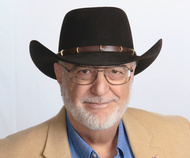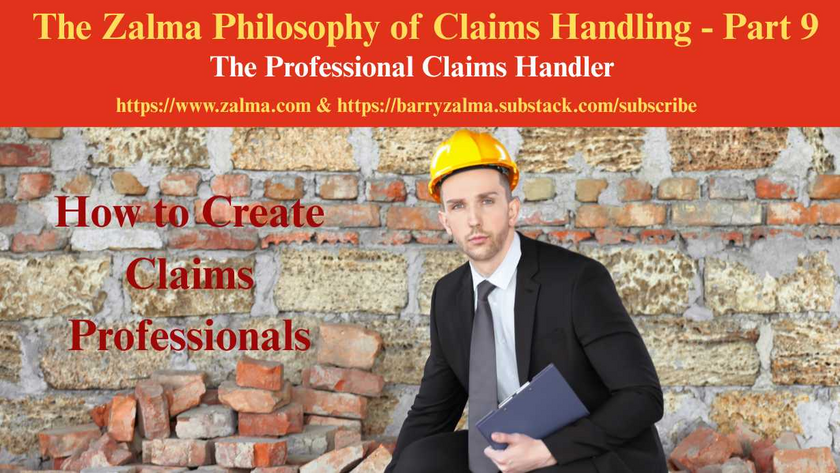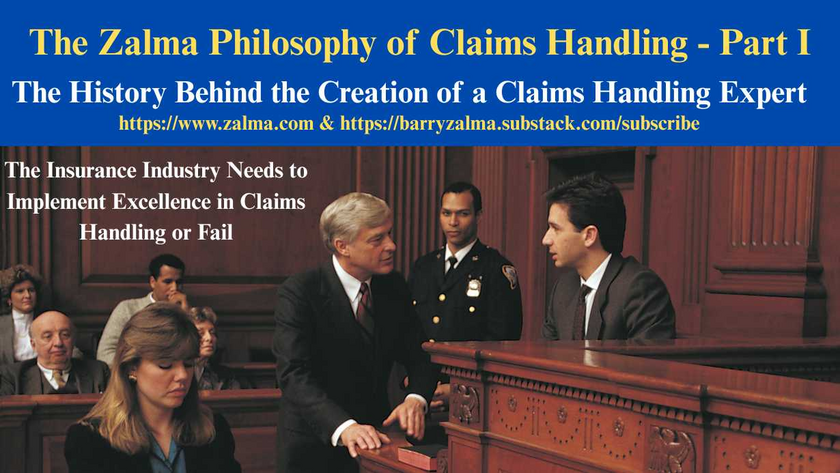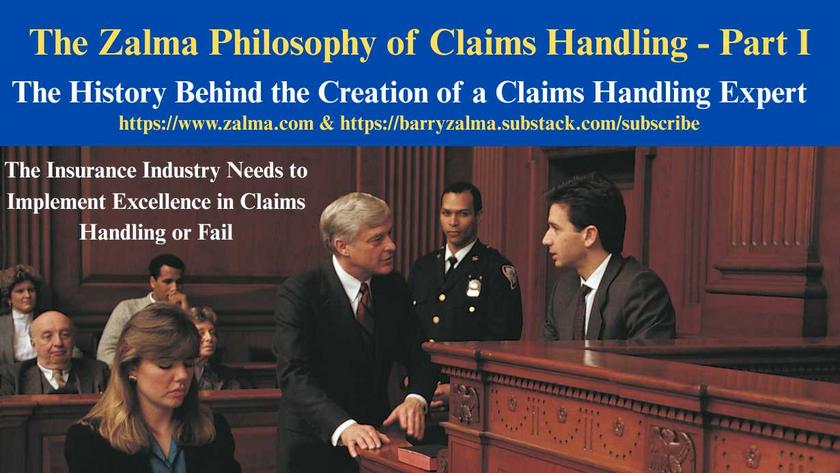
Anti-Stacking Provision Clear & Unambiguous
Barry Zalma
Jul 7, 2023
Read the full article at https://lnkd.in/gZaQBi8Q and see the video at https://lnkd.in/gMcEHzRs and at https://lnkd.in/gsijzhSa and at https://zalma.com/blog plus more than 4550 posts.
No Extra Insurance for Fatal School Bus Accident.
Plaintiffs, Mark and Karen Kuhn (the Kuhns) sued seeking a declaratory judgment of the available liability insurance covering an accident between a semitruck owned by Jason Farrell and a school bus driven by Mark.
In Mark Kuhn and Karen Kuhn v. Owners Insurance Company; et al, No. 4-22-0827, 2023 IL App (4th) 220827, Court of Appeals of Illinois, Fourth District (June 28, 2023) the semitruck was insured under a policy issued by Owners Insurance Company (Owners), and that policy also insured six other vehicles-two other semitrucks and four trailers- that were not involved in the accident. Each vehicle had a limit of $1 million per accident. The Kuhns sought a declaration that the coverage limits for all of the covered vehicles should be aggregated, or “stacked,” resulting in a total of available liability insurance of $7 million for the accident.
The trial court entered a written judgment in favor of the Kuhns, concluding that (1) the policy was ambiguous; (2) because the ambiguity should be construed against Owners, stacking of the policy’s coverage limits was permitted; and (3) the aggregate limit of insurance for liability coverage under the policy was $7 million. Accordingly, the court granted the Kuhns’ motion for summary judgment and entered judgment against Owners. Owners appealed
BACKGROUND
“Stacking” ordinarily involves combining or aggregating the policy limits applicable to more than one vehicle where the other vehicles are not involved in the accident.
The rationale behind not allowing stacking of liability coverage-that liability policies insure particular cars-is contrary to plaintiff’s position. Because the insurance attaches to a particular car.
The Illinois Supreme Court recently declined to consider adopting a per se rule barring stacking of automobile liability coverage as a matter of law because the antistacking provision in that case was unambiguous and enforceable as written. [Hess v. Estate of Klamm, 2020 IL 124649, ¶ 30, 161 N.E.3d 183.’
The Insurance Policy at Issue
The policy provided “Combined Liability” coverage on each of the seven vehicles of up to “$1 Million each accident.” The Kuhns argued that the wording of the policy and accompanying declarations were ambiguous pursuant to Illinois case law because the coverages and premiums set forth in the declarations were repeated for each insured vehicle.
Owners argued that the policy declarations were consistent with each other and not ambiguous. Owners argued the policy contained an unambiguous antistacking provision that cleared up any arguable ambiguity in the declarations and should be enforced as written. In particular, subsection 5 explicitly stated that the limits for the same or similar coverage applying to other vehicles could not be added to determine the amount of coverage for an accident.
ANALYSIS
In general, antistacking provisions in insurance policies are not contrary to public policy. In Illlinois, an unambiguous antistacking clause will be given effect by a reviewing court.
In this case, the “Limit of Insurance” provisions refer back to the declarations to define the policy limits and the declarations pages state seven separate times that the “combined liability” limit on each vehicle is $1 million for each accident.
Reading the policy as a whole and interpreting its plain language, the court concluded that the declarations are consistent, not ambiguous, and the antistacking clause set forth in the policy clarifies any possible ambiguity.
The coverages varied based on the vehicle insured; for example, the premiums for vehicle 1 and vehicle 2 (both semitrucks) were identical for liability, UIM/UM coverage, and medical payments, but only vehicle 1 had comprehensive and collision coverage.
The Antistacking Clause
Even if some ambiguity existed, the policy’s antistacking clause cleared up any possible confusion.
The explicit antistacking clause of the policy, is unambiguous and should be enforced as written.
Instead of applying the Policy’s clear anti-stacking provision, the trial court engaged in the very sort of tortured and strained reading of the Policy to find an ambiguity that this Court and the Illinois Supreme Court have repeatedly rejected. This was error, the trial court’s order was reversed and the case remanded with directions to enter summary judgment in favor of Owners.
ZALMA OPINION
It should be axiomatic that a trial court should never engage in tortured or strained reading of a policy to find an ambiguity that did not exist regardless of the need of the accident victims and their families. A clear and unambiguous policy wording that refuses to allow stacking of coverages that apply to more than one vehicle insured when only one vehicle is involved in an accident, should be enforced as written. The Illinois Court of Appeals read the entire policy and found no ambiguity and insisted on enforcing the contract of insurance as written.
(c) 2023 Barry Zalma & ClaimSchool, Inc.
Please tell your friends and colleagues about this blog and the videos and let them subscribe to the blog and the videos.
Subscribe and receive videos limited to subscribers of Excellence in Claims Handling at locals.com https://zalmaoninsurance.locals.com/subscribe.
Consider subscribing to my publications at substack at https://barryzalma.substack.com/publish/post/107007808
Go to Newsbreak.com https://www.newsbreak.com/@c/1653419?s=01
Follow me on LinkedIn: www.linkedin.com/comm/mynetwork/discovery-see-all?usecase=PEOPLE_FOLLOWS&followMember=barry-zalma-esq-cfe-a6b5257
Daily articles are published at https://zalma.substack.com. Go to the podcast Zalma On Insurance at https://podcasters.spotify.com/pod/show/barry-zalma/support; Follow Mr. Zalma on Twitter at https://twitter.com/bzalma; Go to Barry Zalma videos at Rumble.com at https://rumble.com/c/c-262921; Go to Barry Zalma on YouTube- https://www.youtube.com/channel/UCysiZklEtxZsSF9DfC0Expg; https://creators.newsbreak.com/home/content/post; Go to the Insurance Claims Library – https://zalma.com/blog/insurance-claims-library.
Please tell your friends and colleagues about this blog and the videos and let them subscribe to the blog and the videos.
Subscribe to Excellence in Claims Handling at https://lnkd.in/gfFKUaTf or https://lnkd.in/gcZKhG6g
Refusal to Provide Workers’ Compensation is Expensive
Post 5240
Read the full article at https://lnkd.in/guC9dnqA, see the video at https://lnkd.in/gVxz-qmk and at https://lnkd.in/gUTAnCZw, and at https://zalma.com/blog plus more than 5200 posts.
In Illinois Department of Insurance, Insurance Compliance Department v.USA Water And Fire Restoration, Inc., And Nicholas Pacella, Individually And As Officer, Nos. 23WC021808, 18INC00228, No. 25IWCC0467, the Illinois Department of Insurance (Petitioner) initiated an investigation after the Injured Workers’ Benefit Fund (IWBF) was added to a pending workers’ compensation claim. The claim alleged a work-related injury during employment with the Respondents who failed to maintain workers’ compensation Insurance.
Company Overview:
USA Water & Fire Restoration, Inc. was incorporated on January 17, 2014, and dissolved on June 14, 2019, for failure to file annual reports and pay franchise taxes. It then operated under assumed names including USA Board Up & Glass Co. and USA Plumbing and Sewer. The business ...
Arsonist Incompetently Moves Pro Se to Avoid Prison
Post 5239
Read the full article at https://lnkd.in/gRX8TfKn, see the video at https://lnkd.in/gY3Jvnqp and at https://lnkd.in/gRCaaf-3, and at https://zalma.com/blog plus more than 5200 posts.
In Christopher A. Barosh v. Morris Houser, et al., Civ. No. 22-0769, United States District Court, E.D. Pennsylvania (November 25, 2025) a convicted arsonist and insurance fraudster moved the USDC acting in Pro se filed Objections to Magistrate Judge Reid’s Recommendation that the US District Judge dismiss his § 2254 Petition to avoid jail.
BACKGROUND
In October 2005, Barosh set fire to his girlfriend’s Philadelphia home — some 25 hours before the cancellation of the property’s insurance policy. Several witnesses saw Barosh leaving the property shortly before the fire erupted. After the fire, Barosh made “two separate admissions of guilt.”
He attempted to pay an acquaintance to provide him with an alibi for the time of the arson. The eyewitnesses, brother, and ...
Conditional Release Allows Supplemental Claims
Post 5238
Read the full article at https://lnkd.in/ge2yNQby, see the video at https://lnkd.in/gcSF9KWj and at https://lnkd.in/gQfJqwiM, and at https://zalma.com/blog plus more than 5200 posts.
A Release Should Totally Resolve Dispute
In Harvey et al. v. Hall, No. A25A1774, Court of Appeals of Georgia, Fourth Division (December 3, 2025) Paul Harvey, an employee of Arthur J. Dovers (d/b/a 3D Mobile Home Services), drove a truck towing a trailer loaded with machinery and equipment. Harvey fell asleep, veered off the road, and crashed into a culvert, causing Lamar Hall serious injuries.
FACTS OF SETTLEMENT
On August 18, 2020, Hall signed a limited liability release under OCGA § 33-24-41.1, releasing Harvey, Dovers, and their insurer (Georgia Farm Bureau Insurance Company) from liability for the accident in exchange for $50,000, “except to the extent other insurance coverage is available which covers the claim.”
Dovers’s general liability insurer (Republic-Vanguard ...
The Professional Claims Handler
Post 5219
Posted on October 31, 2025 by Barry Zalma
An Insurance claims professionals should be a person who:
Can read and understand the insurance policies issued by the insurer.
Understands the promises made by the policy.
Understand their obligation, as an insurer’s claims staff, to fulfill the promises made.
Are competent investigators.
Have empathy and recognize the difference between empathy and sympathy.
Understand medicine relating to traumatic injuries and are sufficiently versed in tort law to deal with lawyers as equals.
Understand how to repair damage to real and personal property and the value of the repairs or the property.
Understand how to negotiate a fair and reasonable settlement with the insured that is fair and reasonable to both the insured and the insurer.
How to Create Claims Professionals
To avoid fraudulent claims, claims of breach of contract, bad faith, punitive damages, unresolved losses, and to make a profit, insurers ...

The History Behind the Creation of a Claims Handling Expert
The Insurance Industry Needs to Implement Excellence in Claims Handling or Fail
Post 5210
This is a change from my normal blog postings. It is my attempt. in more than one post, to explain the need for professional claims representatives who comply with the basic custom and practice of the insurance industry. This statement of my philosophy on claims handling starts with my history as a claims adjuster, insurance defense and coverage lawyer and insurance claims handling expert.
My Training to be an Insurance Claims Adjuster
When I was discharged from the US Army in 1967 I was hired as an insurance adjuster trainee by a professional and well respected insurance company. The insurer took a chance on me because I had been an Army Intelligence Investigator for my three years in the military and could use that training and experience to be a basis to become a professional insurance adjuster.
I was initially sat at a desk reading a text-book on insurance ...

The History Behind the Creation of a Claims Handling Expert
The Insurance Industry Needs to Implement Excellence in Claims Handling or Fail
Post 5210
This is a change from my normal blog postings. It is my attempt. in more than one post, to explain the need for professional claims representatives who comply with the basic custom and practice of the insurance industry. This statement of my philosophy on claims handling starts with my history as a claims adjuster, insurance defense and coverage lawyer and insurance claims handling expert.
My Training to be an Insurance Claims Adjuster
When I was discharged from the US Army in 1967 I was hired as an insurance adjuster trainee by a professional and well respected insurance company. The insurer took a chance on me because I had been an Army Intelligence Investigator for my three years in the military and could use that training and experience to be a basis to become a professional insurance adjuster.
I was initially sat at a desk reading a text-book on insurance ...














